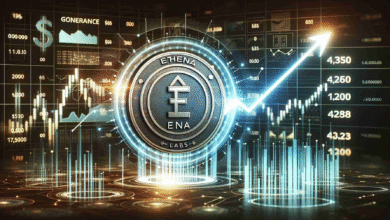Asia biggest stock exchanges curb crypto hoards
Asia top bourses are tightening rules on companies hoarding crypto. Here’s what HKEX, ASX, NSE and others are doing—and what it means for investors.

Why are Asian bourses pushing back now?
Over the last eighteen months, a handful of listed companies across Asia and beyond flirted with or embraced a digital-asset-first treasury strategy—reallocating cash into Bitcoin and sometimes exploring equity issuance to buy even more. In Japan, for instance, Tokyo-listed Metaplanet publicly adopted a “Bitcoin-first, Bitcoin-only” treasury posture, catalyzing intense debate across the region about the line between prudent diversification and speculative hoarding.
Exchanges have two worries. First, market integrity: if a listed entity becomes little more than a “cash box” or crypto hoard, its share price may decouple from operational performance and instead track a volatile token, inviting speculation and retail harm. Second, investor protections: a treasury dominated by crypto raises tricky questions about custody, valuation, impairment, and the verifiability of reserves—issues that have vexed auditors and regulators worldwide. The Financial Times has highlighted how standard audit procedures struggle to verify control over wallets and potential rehypothecation, underscoring the need for stronger governance whenever public companies hold large crypto balances.

These concerns crystallized into action in October 2025, when reporting indicated three of the region’s largest exchanges were intensifying oversight or blocking attempts by companies to reorient listings into pure digital asset treasury vehicles. That shift marks a regional line in the sand: crypto may sit on balance sheets, but public listings are not backdoors for quasi-fund structures.
The Hong Kong lens “cash company” rules and suitability for listing
Hong Kong’s rulebook has long contained a powerful lever: cash company rules. While not framed explicitly for crypto, these provisions allow the exchange to treat a company that effectively becomes a pile of liquid assets—rather than an operating business—as if it were applying for a new listing. The policy aim is to prevent shell-like vehicles from listing one thing and morphing into another without proper vetting. Hong Kong Exchanges & Clearing (HKEX) has reiterated that there is no fixed threshold; the Exchange looks at the facts and circumstances—including the proportion of liquid assets and the substance of operations.
Layered onto that are HKEX’s broader suitability expectations in Chapter 8 of the Main Board Listing Rules—the Exchange must be satisfied that both the issuer and its business are suitable for listing. That gives HKEX latitude to question drastic treasury shifts that might convert a listed operator into a de facto crypto storage entity. Market commentary this month indicated HKEX has used these levers to push back against would-be digital asset treasury conversions, reportedly rejecting multiple applicants.
The upshot for Hong Kong issuers is not a crypto ban; it’s a substance test. A listed company can engage with virtual assets—via limited treasury allocation, pilot programs, or regulated activities—but shouldn’t expect a free pass to become an exchange-traded crypto hoard unless it meets stringent criteria akin to a new listing, with full investor safeguards.
Australia’s ASX: compliance updates and “cash box” aversion reborn
The Australian Securities Exchange (ASX) has its own history of frowning on cash box entities, a stance that predates crypto. In a 29 August 2025 Compliance Update, ASX explicitly flagged that it may use its Listing Rules 18.7 and 18.8 powers to examine any entity engaging in crypto-asset-related activities, stressing disclosure quality and continuous compliance. Legal analyses following the update note that ASX will scrutinize crypto treasury strategies at both IPO and post-listing. It may deem certain balances cash-equivalent for structural tests, potentially triggering rules on operations and shareholder approvals for significant changes.
This is classic ASX pragmatism. If a business wants to hold digital assets as part of its treasury, it must show robust governance, risk management, and a clear operating purpose beyond crypto accumulation. If it drifts toward hoarding, ASX can suspend or require remedial steps to restore alignment with listing objectives—much as it historically did with cash box constructs.
India’s NSE focuses on fundamentals and investor protection
India’s National Stock Exchange (NSE) hasn’t set a bespoke crypto-treasury rule. Still, its recent tightening of main-board migration criteria for SMEs and a broader push on market quality show the regulatory tenor: substance, profitability, and transparency. Even without an explicit “crypto hoard” prohibition, rules that demand robust revenues, profit track records, and stronger governance make it difficult for a listed company to justify a pivot into a non-operating crypto treasure chest.
Reports this week also grouped India among exchanges pushing back on crypto-hoarding listings, aligned with the country’s cautious stance on retail crypto risks. For Indian issuers, the message is similar to Hong Kong and Australia: treasury diversification is one thing; recasting the company as a crypto vault without a coherent operating model is another.
Singapore and South Korea have different tools, but a similar trajectory
Singapore has primarily targeted consumer harm and conduct risks in digital assets through the Monetary Authority of Singapore (MAS) by tightening rules on advertising, retail access, segregation of assets, and risk controls for Digital Payment Token (DPT) providers. While these guidelines are aimed at service providers rather than listed issuers, they set a regulatory bar that informs exchange expectations for any public company dabbling in crypto exposure in Singapore’s market environment. Stronger conduct and consumer access measures make it harder for public companies to promote speculative crypto exposures without stringent controls.
South Korea has moved on to transparency, requiring companies that hold or issue crypto to disclose these exposures in their financial statements from 2024. That disclosure regime doesn’t forbid crypto holdings, but it forces clarity on size, nature, and valuation—key guardrails that exchanges can reference when assessing suitability and investo
What counts as “hoarding” and where’s the line?
Exchanges rarely publish a single numeric threshold—by design. HKEX, for example, notes there’s no prescribed quantitative test for a cash company. Instead, they assess context: the share of liquid assets, the durability of operating revenues, the presence of real customers and products, the quality of governance around wallet custody and valuation, and whether public communications are veering into speculative promotion rather than business fundamentals. ASX takes a similarly holistic view under its general powers and structure/operations rules.
In practice, the line gets tested when companies:
-
Raise large sums via equity or warrants with explicit plans to buy substantial crypto.
-
Pivot disclosures and investor messaging to emphasize token price over business metrics.
-
Allow digital assets to dominate the balance sheet while core operations remain thin.
-
Provide limited visibility into custody, control of keys, counterparty risk, and impairment/valuation methods.
The more a company looks like a pass-through bet on a token—and the less it resembles an operating enterprise—the louder the exchange’s questions become.
Japan’s Bitcoin-leaning treasuries and the regional ripple
Japan offers a vivid—if singular—case study. Metaplanet, a Tokyo-listed firm, announced in May 2024 that it would adopt Bitcoin as its strategic treasury reserve asset and subsequently explored significant capital-raising to deepen its holdings. The move sparked both investor excitement and regulatory curiosity across Asia, especially as proposals to scale holdings drew headlines and questions about auditability, disclosure, and shareholder protections.

Even though Tokyo has its own regulatory context, the cross-border visibility of that pivot helped catalyze regional exchanges to clarify where they draw the line. Japan’s example underscores why exchanges emphasize suitability and substance: a company’s treasury strategy can quickly become its de facto business model, changing the risk profile for public investors.
The audit and disclosure problem that won’t go away
A key reason for the pushback is that crypto auditing is uneven. While top firms have developed procedures—such as obtaining confirmations from custodians, reviewing transaction histories, and testing internal controls—there’s no universally accepted, detailed standard for verifying on-chain reserves, ownership, and pledges across all scenarios. Without clear wallet-level attestations, exchanges worry about double-counting, encumbrances, and mismatches between reported holdings and real-world control.
Analysts have flagged that even some large, sophisticated issuers present limited wallet transparency, leaving auditors to rely on judgment-heavy methods. For public markets that pride themselves on comparable, verifiable disclosures, that’s a problem. Hence, the chorus of measures includes: cash company tests, suitability assessments, enhanced continuous disclosure, some jurisdictions, and explicit financial-statement disclosures of crypto assets.
How boards should respond: governance and guardrails
Boards considering material crypto exposure need to move beyond “number go up” narratives and adopt the governance posture exchanges expect:
Purpose-built treasury policy
A board-approved treasury policy should specify exposure limits, eligible assets, diversification rules, rebalancing bands, liquidity gates, and stress scenarios. It must draw a clear distinction between strategic reserves and speculative positions and define when shareholder approval is required for changes, significant especially in ASX jurisdictions, where a significant change in the nature or scale of activities can trigger Listing Rule 11.
Best-in-class custody and key management
Exchanges and investors alike will look for institutional-grade custody with segregated accounts, multi-sig or MPC controls, insurance, and regular attestations. Clear key-management procedures, incident response, and counterparty risk frameworks must be disclosed in plain language.
Audit-ready evidence and valuation discipline
Companies should prepare wallet-level proofs, third-party confirmations, and defensible valuation and impairment methods tied to recognized accounting frameworks. In South Korea, where disclosures are mandatory, issuers must be prepared to provide footnote-level detail on the nature and purpose of their holdings.
Communications that emphasize operations, not tokens
Investor updates should highlight customers, revenue, margins, and product pipelines—not just token balances or price targets. Exchanges will scrutinize promotional tone and any implication that the equity is a proxy for crypto exposure rather than an ownership stake in an operating company.
What this means for investors
For investors, the pushback is not anti-crypto; it’s pro-market quality. If you’re evaluating a listed company with meaningful digital asset exposure, ask:
-
Does the business have durable operating cash flows independent of token prices?
-
How transparent are custody arrangements, wallet proofs, and audit procedures?
-
Is crypto a complement to strategy, or is the company effectively a listed fund without fund-level protections?
-
Does the exchange’s rule framework—from cash-company tests to disclosure regimes—support your ability to assess risk?
When exchanges enforce these standards, equities tied to digital asset treasuries may trade with less volatility, better disclosure, and more transparent governance, benefiting long-term investors.
The road ahead: from clampdown to clarity
The most likely path is not a permanent clampdown but a codified framework. Expect more exchanges to:
-
Publish interpretive guidance on when crypto becomes a cash-equivalent for listing rule purposes.
-
Tighten continuous disclosure expectations around treasury rebalancing, custody, and counterparty exposures.
-
Encourage or require assurance over reserves, possibly via industry-standard attestation protocols.
-
Lean on existing powers—like ASX’s general compliance tools and HKEX’s suitability remit—to keep listed entities anchored to their operating purpose.
As a result, companies can still hold Bitcoin or other digital assets—but only within a well-governed structure that doesn’t turn a listing into an opaque crypto hoard.
Conclusion
The message from Asia’s biggest stock exchanges is consistent: public listings represent operating businesses, not back-door crypto funds. Hong Kong’s cash company doctrine, Australia’s compliance reminders, India’s push for stronger fundamentals, Singapore’s conduct standards, and South Korea’s disclosure mandates all point to the same equilibrium—measured exposure, robust governance, and transparent reporting. For CFOs and boards, the way forward is to treat crypto like any other high-beta asset: size it prudently, control it rigorously, and explain it transparently. For investors, this trend is a net positive, promising clearer signals and fewer surprises as digital assets continue their long march into corporate finance.
FAQs
Q: Are Asian exchanges banning listed companies from holding crypto altogether?
No. The trend is toward guardrails, not bans. Exchanges are using suitability tests, cash company rules, and disclosure requirements to prevent listed issuers from turning into crypto hoards without proper oversight. Limited, well-governed exposure is generally permissible; wholesale pivots into digital asset treasury models face pushback.
Q: What exactly is a “cash company,” and why does it matter for crypto treasuries?
Under HKEX guidance, a cash company is an issuer that essentially becomes a vehicle holding primarily liquid assets rather than operating a business. If deemed a cash company, an issuer may be treated as if applying for a new listing. That doctrine now informs how HKEX views aggressive crypto hoarding by listed firms.
Q: How is ASX approaching companies that want large crypto reserves?
ASX has reminded the market that it can use general powers to investigate crypto-related activities and expects high-quality disclosures. Legal commentary notes ASX may treat certain crypto balances as cash equivalents for structural tests and may require shareholder approval for significant changes in activities.
Q: Does South Korea’s regime affect non-Korean companies?
Directly, no—but Korea’s 2024 disclosure requirement is influential. It shows how regulators can mandate comprehensive financial-statement disclosures for crypto holdings, a model other jurisdictions or exchanges can reference to improve transparency and auditability.
Q: What should a board implement before allocating material cash to Bitcoin?
Adopt a board-approved treasury policy, institutional custody and key management, audit-ready evidence and valuation methods, and communications that emphasize operations over token speculation. Where relevant, plan for shareholder approvals and ongoing continuous disclosure obligations.
Also Read: Crypto Mining in 2025 Still Profitable?









